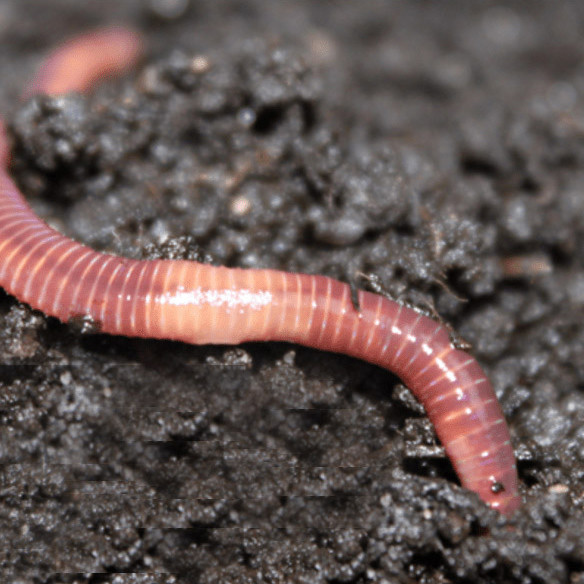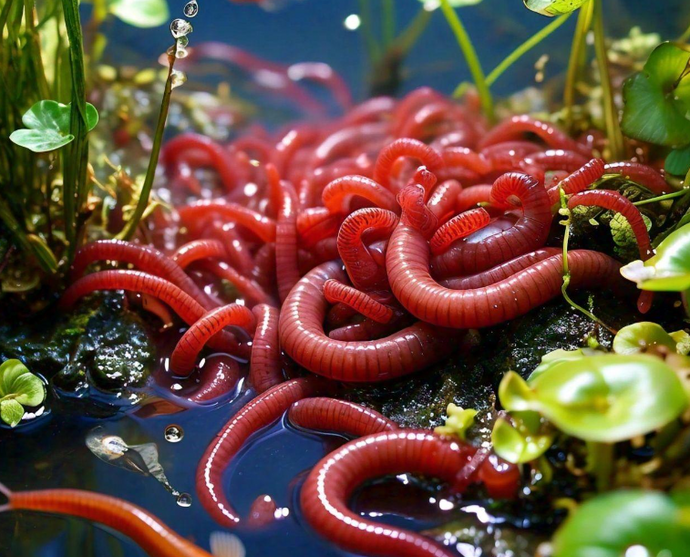Red wigglers: Expand your worm farm
Red wigglers: Expand your worm farm
Blog Article
Making Use Of Red Wigglers for Effective Organic Garbage Disposal
Using red wigglers for organic garbage disposal provides a compelling strategy to managing food scraps while promoting ecological sustainability. These worms not only boost waste decay yet additionally produce important worm castings, which can considerably improve soil health. Their capacity to process huge volumes of natural material with very little effort placements them as an accessible remedy for homes and areas alike. Nonetheless, comprehending the subtleties of setting up an effective worm bin and preserving an optimum habitat is crucial for optimizing their advantages. The following action in this process may stun you.
Advantages of Using Red Wigglers
Among one of the most engaging benefits of making use of red wigglers for organic waste disposal is their impressive effectiveness in composting. These worms, clinically referred to as Eisenia fetida, are especially adjusted for damaging down natural products, allowing them to refine waste approximately two times their body weight daily. This quick decomposition not just increases the composting process but also produces nutrient-rich worm castings that significantly enhance dirt top quality.
In addition, red wigglers add to a decrease in land fill waste. By drawing away natural materials from landfills, they help lessen methane exhausts-- a powerful greenhouse gas. This environmental benefit is essential in the fight versus environment modification.
Additionally, red wigglers are low-maintenance and can prosper in different environments, making them available for both novice and seasoned composters. Their capacity to replicate swiftly guarantees a steady populace, assisting in ongoing waste handling.
Establishing Up Your Worm Bin
Developing an effective worm container is important for maximizing the benefits of composting with red wigglers. Ensure the bin has adequate drain openings to avoid excess dampness, as red wigglers flourish in a moist but not soggy setting.
(Lake James Bait)Following, prepare the bed linen material, which serves as the worms' environment and food resource. The bin ought to be placed in a dark, temperature-controlled area, preferably in between 55 ° F and 77 ° F, to preserve worm activity.
As soon as the bin is established up, introduce the red wigglers, permitting them to accustom to their brand-new environment. A well-maintained bin will certainly not only support the wellness of the worms however additionally assist in efficient decay of natural waste.
(red wiggler worms for sale)
What to Feed Red Wigglers
An understanding of the suitable diet plan for red wigglers is important for keeping a healthy and balanced worm populace and maximizing composting performance. Red wigglers grow on a varied diet regimen that mostly includes natural products. Suitable food sources include vegetable scraps, fruit peels, coffee premises, eggshells, and shredded paper. These things not just offer essential nutrients yet additionally add to the wetness balance within the worm bin.
It is critical to stay clear of specific foods that can hurt the worm population. Red wigglers need to not be fed meat, dairy products, oily foods, or refined products, as these can attract parasites and develop unpleasant smells. red wigglers. Furthermore, citrus fruits and spicy foods need to be lessened, as their level of acidity can be damaging to worms
To promote optimum digestion, food should be sliced into smaller sized pieces, helping with quicker breakdown and usage. Introducing food in small amounts is also crucial; overfeeding can result in anaerobic conditions and bring in unwanted parasites. Keeping an eye on the worm bin for food usage prices will aid ensure that red wigglers are obtaining an adequate diet regimen while maintaining an effective composting setting. Appropriate feeding techniques are crucial for fostering a growing community within the worm container.
Keeping Your Worm Habitat
A well-kept worm environment is necessary for the wellness and performance of red wigglers. To make certain optimum conditions, it is essential to keep an eye on temperature level, wetness, and oygenation within the worm bin (red wigglers).
A great rule of thumb is to preserve moisture at approximately 70% to 80%. If the bed linen comes to be as well wet, it can lead to anaerobic problems that are dangerous to the worms.

Using Worm Castings in Gardening
Rich in nutrients and helpful microbes, worm spreadings offer as an extraordinary natural plant food for horticulture. Generated via the digestive system procedures of red wigglers, these spreadings contain a range of necessary nutrients, consisting of nitrogen, phosphorus, and potassium, which advertise durable plant growth. Unlike synthetic fertilizers, worm castings offer a slow-release mechanism, making sure that nutrients are offered to plants over a prolonged period, thus minimizing the danger of nutrient leaching and soil depletion.
In addition to vitamins and mineral material, worm castings boost dirt structure and oygenation, boosting dampness retention and drain. The microbial life present in worm spreadings assists to suppress virus and promotes a healthy and balanced soil community, further profiting plant health. When included into the dirt or utilized as a leading dressing, worm castings can substantially increase seed germination prices, root growth, and overall plant vitality.
For optimal outcomes, gardeners must apply worm spreadings at a rate of 1-2 inches per square foot, mixing them right into the soil or including them into potting blends. Overall, utilizing worm castings is an environment-friendly approach to enhancing dirt fertility and guaranteeing growing garden atmospheres.
Verdict

Report this page